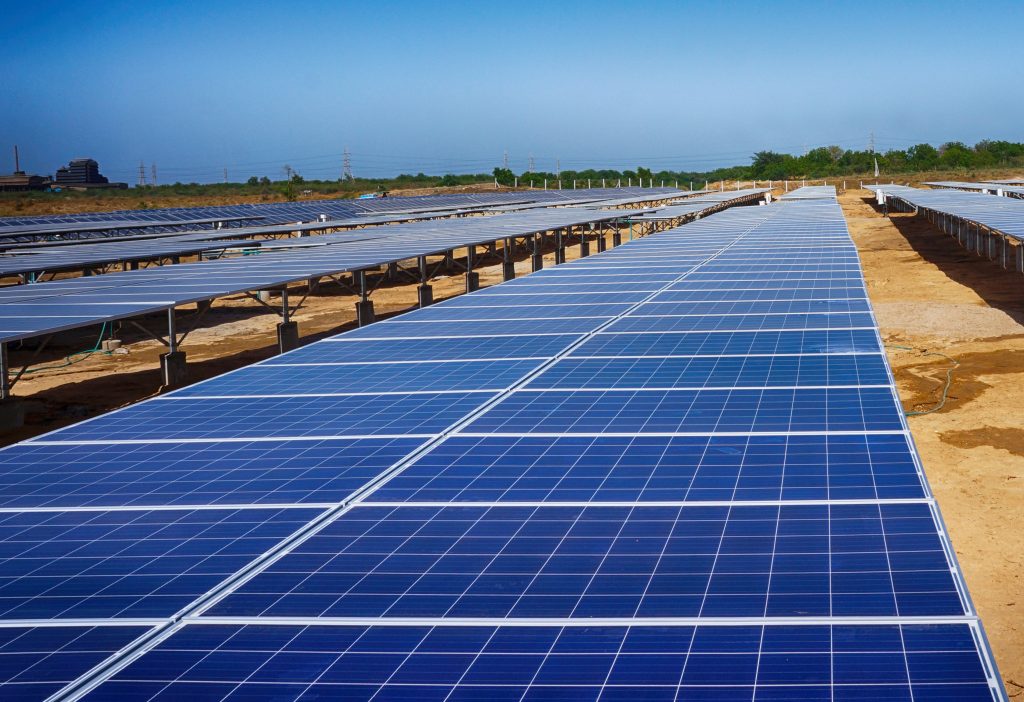
The government of India has already set an ambitious target to achieve 100 gigawatt by 2022
New Delhi: India is at the cusp of a solar revolution, the government has already set an ambitious target to achieve 100 gigawatt (GW) by 2022. Keeping the target in mind, Indian states have already started ramping up their installed solar and wind powered capacity. ETEnergyWorld looks at the top 10 states by installed solar powered capacity. The data is provided by solar power consultancy firm Bridge To India.
1. Gujarat
Gujarat houses the sixth- largest installed solar power generation capacity in the country. The state’s solar capacity at the end of 2018 stood at 1,607 MW. Gujarat’s total installed electricity generation capacity stood at 31,382 MW at the end of 2018, with the solar sector’s share at 5.12 per cent.
2. Telangana
Telangana houses the second-highest installed solar power generation capacity in the country. The state’s solar capacity at the end of 2018 stood at 3,501 MW. Its total installed electricity generation capacity stood at 15,944 MW at the end of 2018, with solar sector’s share at 22 per cent.
3. Rajasthan
Rajasthan houses the third-highest installed solar power generation capacity in the country. The state’s solar capacity at the end of 2018 stood at 3,081 MW. Rajasthan’s total installed electricity generation capacity stood at 21,833 MW at the end of 2018, with solar sector’s share at 14.11 per cent.
4. Andhra Pradesh
Andhra Pradesh houses the fourth-highest installed solar power generation capacity in the country. The state’s solar capacity at the end of 2018 stood at 2,829 MW. Andhra Pradesh’s total installed electricity generation capacity stood at 23,726 MW at the end of 2018, with solar sector’s share at 12 per cent.
5. Tamil Nadu
Tamil Nadu houses the fifth-highest installed solar power generation capacity in the country. The state’s solar capacity at the end of 2018 stood at 2,055 MW. Tamil Nadu’s total installed electricity generation capacity stood 30,447 MW at the end of 2018, with solar sector’s share at 6.74 per cent.
6. Karnataka
Karnataka tops the list of states with the highest installed solar power generation capacity in the country. The state’s total solar capacity at the end of 2018 stood at 5,328 megawatt (MW). While, its total installed electricity generation capacity stood at 27,199 MW at the end of 2018, with solar sector’s share at 19.58 per cent.
7. Madhya Pradesh
Madhya Pradesh houses the seventh-largest installed solar power generation capacity in the country. The state’s solar capacity at the end of 2018 stood at 1,526 MW. Madhya Pradesh’s total installed electricity generation capacity stood at 21,873 MW at the end of 2018, with the solar sector’s share at 7 per cent.
8. Maharashtra
Maharashtra houses the eighth-largest installed solar power generation capacity in the country. The state’s solar capacity at the end of 2018 stood at 1,311 MW. Its total installed electricity generation capacity stood at 43,779 MW at the end of 2018, with the solar sector’s share at 3 per cent.
9. Uttar Pradesh
Uttar Pradesh houses the ninth-largest installed solar power generation capacity in the country. The state’s solar capacity at the end of 2018 stood at 875 MW. Madhya Pradesh’s total installed electricity generation capacity stood at 25,061 MW at the end of 2018, with the solar sector’s share at 3.49 per cent.
10. Punjab
Punjab houses the 10th-largest installed solar power generation capacity in the country. The state’s solar capacity at the end of 2018 stood at 845 MW. Punjab’s total installed electricity generation capacity stood at 13,432 MW at the end of 2018, with the solar sector’s share at 6.29 per cent.
Source By: www.energy.economictimes.indiatimes.com
Solar panel system , Residential Rooftop solar panel system projects , commercial / EPC solar projects , solar panel manufacturer Ahmedabad Gujarat , Solar inverter Gujarat India


